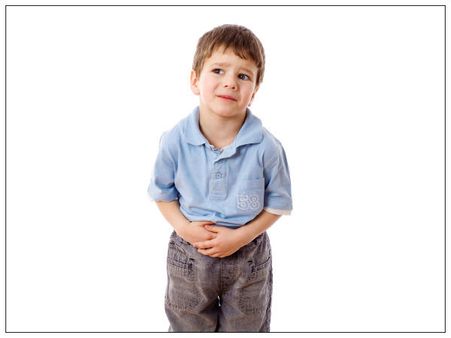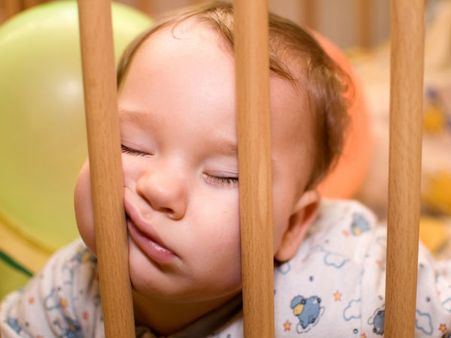Just In
- 4 hrs ago

- 6 hrs ago

- 7 hrs ago

- 7 hrs ago

Don't Miss
- Sports
 'I Spend Rs 85 lakh in my holidays': Virender Sehwag tells Adam Gilchrist how he refused BBL offer
'I Spend Rs 85 lakh in my holidays': Virender Sehwag tells Adam Gilchrist how he refused BBL offer - News
 RBI's Order To Kotak Mahindra Bank: No New Customers, No New Credit Cards
RBI's Order To Kotak Mahindra Bank: No New Customers, No New Credit Cards - Movies
 Anupamaa | Is Gaurav Khanna Aka Anuj Quitting Rupali Ganguly’s Show? Rajan Shahi Finally Reveals TRUTH
Anupamaa | Is Gaurav Khanna Aka Anuj Quitting Rupali Ganguly’s Show? Rajan Shahi Finally Reveals TRUTH - Technology
 HMD Branded First Set of Android Smartphones Are Here!
HMD Branded First Set of Android Smartphones Are Here! - Education
 MP Board Result 2024: Toppers List of Class 10th and 12th is here
MP Board Result 2024: Toppers List of Class 10th and 12th is here - Finance
 Vodafone Idea FPO: Shares To Debut Tomorrow; GMP Hints Premium Listing; Shares Slump 9%
Vodafone Idea FPO: Shares To Debut Tomorrow; GMP Hints Premium Listing; Shares Slump 9% - Automobiles
 2024 Kia Carens Secures 3-Star Adult & 5-Star Child Safety Ratings – Detailed Look
2024 Kia Carens Secures 3-Star Adult & 5-Star Child Safety Ratings – Detailed Look - Travel
 Mumbai Opens BMC Headquarters For Exclusive Heritage Tour
Mumbai Opens BMC Headquarters For Exclusive Heritage Tour
9 Signs Of Bone Cancer Or Osteosarcoma In Children (International Childhood Cancer Day)
Cancer is one of the most deadly diseases affecting a majority of the population. There has been no certain cause for the abnormal growth of cells.
If it is diagnosed at an early stage, the cancer cells can be destroyed using chemotherapy and other medications. But, at a later stage, death is the only option.

Besides adults, a number of children are also getting affected by cancer these days. In children, bone cancer is one of the major affected diseases. A malignant cancerous tumor grows in the cartilage cells and bones, and it destroys the nearby tissues.
So, it is important that you look for the signs of bone cancer in your children. As a cancerous tumor develops in the bone, it is called the bone cancer.
It is a rare form of cancer and has equivalent symptoms like that a non-cancerous tumor. So, proper diagnosis of any symptom of bone cancer at an early stage is essential for a child's health.
Children often suffer from two common types of bone cancer-Osteosarcoma and Ewing sarcoma.

Types Of Childhood Bone Cancer
1. Osteosarcoma
This
is
one
of
the
most
common
types
of
bone
cancer,
which
mainly
affects
adolescents
during
their
growing
years.
Studies
reveal
that
mainly
half
of
the
children
who
have
bone
cancer
are
affected
by
osteosarcoma.
During
metaphysis,
i.e.,
growing
of
long
bones,
osteosarcoma
starts
developing
either
in
the
tibia,
which
is
the
skin
bone
next
to
the
knee,
femur,
which
is
the
thigh
bone
next
to
the
knee,
or
the
humerus,
which
is
the
upper
arm
bone
situated
next
to
the
shoulder.
2. Ewing Sarcoma
After osteosarcoma, Ewing sarcoma is the second most deadly form of cancer that occurs in children's bone. The formation of this malignant cancerous tumor occurs in the middle or a channel of long bones, or bones that are present in the ribs, skull, spine, breastbone (sternum), collarbone, calf bone, and pelvis. The growth of Ewing sarcoma is also seen in soft tissues rather than the bones.

The 9 Symptoms Of Childhood Bone Cancer:
Children
cannot
express
their
pain
and
suffering
as
adults
can.
Thus,
we
have
to
take
children
for
regular
checkups
and
take
care
of
their
health.
If
you
feel
that
your
child
is
developing
a
sudden
lump
(tumor),
immediately
visit
the
nearest
doctor
for
a
diagnosis.
The
signs
and
symptoms
of
bone
cancer
in
children
vary
from
bone
to
bone.
However,
the
symptoms
will
start
showing
from
an
early
age
before
a
final
diagnosis
is
made.
It
is
up
to
you
to
detect
and
understand
these
symptoms.
Often,
a
small
injury
or
swelling,
which
might
seem
to
occur
as
a
result
of
childhood
fighting,
can
have
deeper
meanings
within.
Let
us
see
some
of
the
signs
of
bone
cancer
in
children.
1. Pain
Any child suffering from any form of a bone cancer will complain of persisting pain. This is a foremost symptom that highlights the growth of cancerous tumor in the bone. The pain develops in the affected bone or the joint near to the bone. If your child complains of pain in the limb, don't ignore it assuming it to be a sports injury. A sports injury will heal within a few days' time, but a pain caused by tumor will have a prolonged effect.
The pain will be acute with the growing days, and now ointment or painkiller can suppress it. During the night, the pain can worsen. Even when your child gets engaged in any physical activity, it will get aggravate the pain. For example, a tumor in the leg can make your child's legs lifeless with each passing day.
2. Swelling Or Lump Formation
The second common symptom to detect bone cancer is the formation of a lump or swelling. Swelling highlights the affected area of the body, making it understandable enough for others that there is a formation of a tumor. It can be seen right away if the tumor occurs on the leg or arms, but if it is on the pelvis or chest, it becomes visible when it enlarges.

3. Limping
Cancerous tumors often result in limping of a tumor that is formed in the leg. The child will have difficulty in walking, and with the growing days, the legs will lose their sensation and become lifeless.

4. Difficulty In Movement
If your child is having difficulty in moving an arm or leg, then it's high time you should consult a doctor. It can be due to a sports injury as well. But if the difficulty becomes persistent, then it can be the beginning of bone cancer.

5. Fragile Bones
The bones become fragile due to the formation of a malignant cancerous tumor with the bones or soft tissues near them. So, if without any reason, a bone cracks, then may be your child is affected with childhood bone cancer. Due to metastatic cancer, the bones weaken and often break even when your child is doing any negligible physical activity. It can even lead to a fracture or sudden severe pain.

6. Fever
Children often fall prey to the changing season and thus get affected with fever. But if there is no reason for a fever, then it can be an alarming sign. People suffering from cancer suffer from fever when a new part of their body gets affected by the cancer cells. It is not an early sign, but mostly an alarm.

7. Fatigue
If your child is suffering from extreme tiredness or fatigue, despite having the right amount of nutrients, then it is high time that he/she needs a medical checkup. Fatigue is often associated with a sign of cancer. This is because the cancer cells use up the maximum amount of energy from the food that is eaten. It makes your body weak.

8. Weight Loss
If you see an unexpected weight loss in your children, consult a medical professional. Cancer-affected people often shed an unexpected amount of their body weight. And if you see similar symptoms of weight loss in your child too, then it can be due to the formation of bone cancer in their body.

9. Anemia
Anemia is another important sign that shows the development of cancer cells within the body. This is because it is often seen that the cancer cells cause bleeding of the tissues internally. So a low hemoglobin level of your child can be indeed alarming.
Studies reveal that osteosarcoma, affecting a minimum of 5% children, mostly occurs in the bone near the knee. While, on the other hand, Ewing sarcoma claims for 4% of childhood cancer and the probability is higher in boys than girls.
So, once you see any of the symptoms of bone cancer, rush to the nearest oncologist for a better opinion. Prevention in time saves nine.
In case of osteosarcoma, it is seen to be treated with multi-agent chemotherapy and surgery. Even Ewing sarcoma is treatable with radiation or multi-agent chemotherapy and surgery if possible.
Share this article!
If you liked reading this article, share it with your loved ones.

-
 healthRoller Coaster Effect In Diabetes: Why Does My Blood Sugar Level Go Up And Down, How To Stop It
healthRoller Coaster Effect In Diabetes: Why Does My Blood Sugar Level Go Up And Down, How To Stop It -
 wellnessStomach Cancer Awareness Month: Is This Daily Habit A Cancer Trigger?
wellnessStomach Cancer Awareness Month: Is This Daily Habit A Cancer Trigger? -
 healthIs Office Stress Messing With Your Health? 5 Red Flags You Can't Ignore!
healthIs Office Stress Messing With Your Health? 5 Red Flags You Can't Ignore! -
 healthMan Dies After Eating Pasta Kept Outside Fridge: What Is Fried Rice Syndrome?
healthMan Dies After Eating Pasta Kept Outside Fridge: What Is Fried Rice Syndrome? -
 pregnancy parentingDown Syndrome Awareness Month: Tests To Check For Down Syndrome Risk During Pregnancy
pregnancy parentingDown Syndrome Awareness Month: Tests To Check For Down Syndrome Risk During Pregnancy -
 wellnessTry These 5 Hot Beverages For Relief From Common Cold
wellnessTry These 5 Hot Beverages For Relief From Common Cold -
 healthWorld Boss Day 2023: Is Your Boss Gaslighting You? Know The Signs
healthWorld Boss Day 2023: Is Your Boss Gaslighting You? Know The Signs -
 pregnancy parentingInternational AAC Awareness Month: Early Signs Of Communication Issues In Kids
pregnancy parentingInternational AAC Awareness Month: Early Signs Of Communication Issues In Kids -
 healthThe Truth about Diabetes in India Unveiled
healthThe Truth about Diabetes in India Unveiled -
 pregnancy parenting1 In 5 Young People (age 13-18) Will Develop A Mental Illness In Their Lifetime; Know Warning Signs
pregnancy parenting1 In 5 Young People (age 13-18) Will Develop A Mental Illness In Their Lifetime; Know Warning Signs -
 healthWorld Alzheimer's Day 2023: What Are The 7 Alzheimer's Disease Warning Signs? Details Inside
healthWorld Alzheimer's Day 2023: What Are The 7 Alzheimer's Disease Warning Signs? Details Inside -
 health4 In 5 Employees In Asia Have High Mental Health Risk: Study; Are You At Risk? Let’s Find Out Here!
health4 In 5 Employees In Asia Have High Mental Health Risk: Study; Are You At Risk? Let’s Find Out Here!


 Click it and Unblock the Notifications
Click it and Unblock the Notifications



